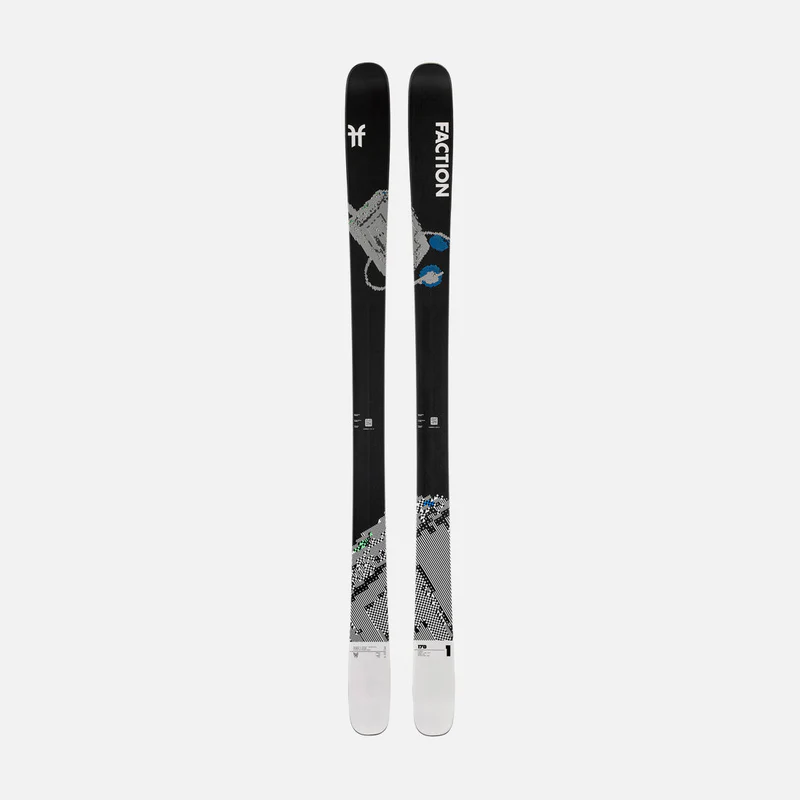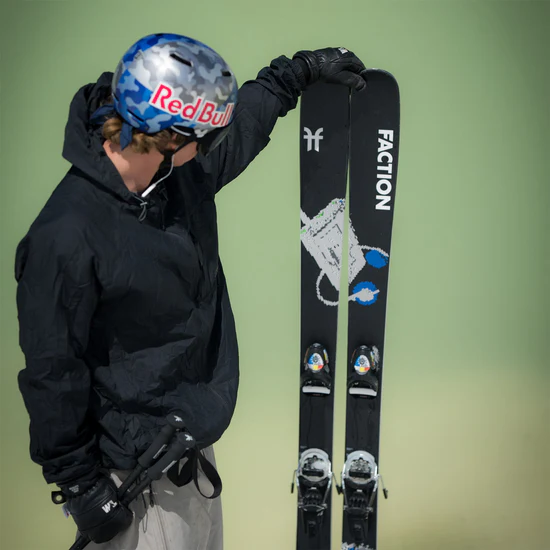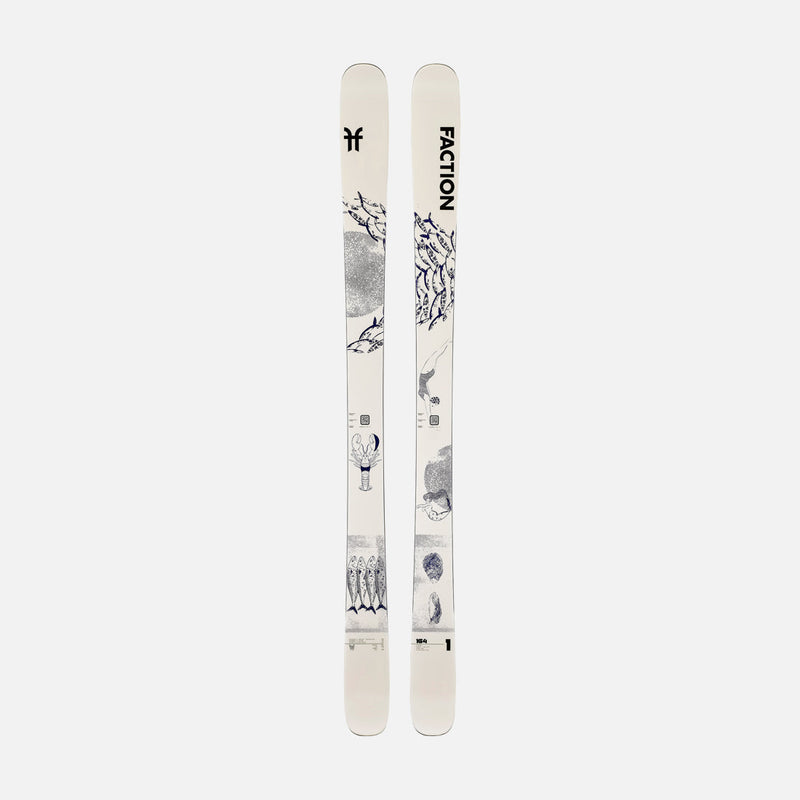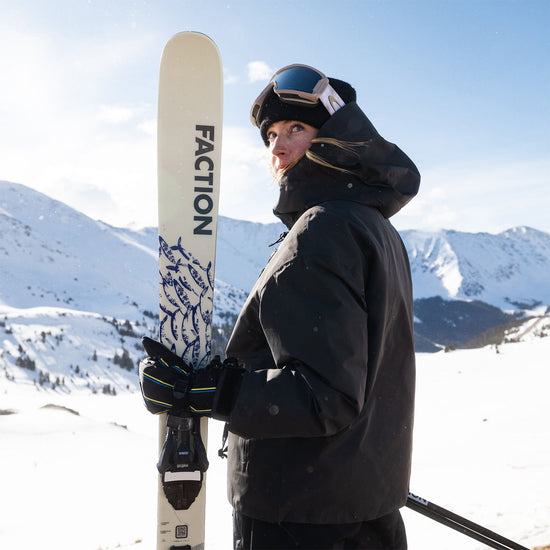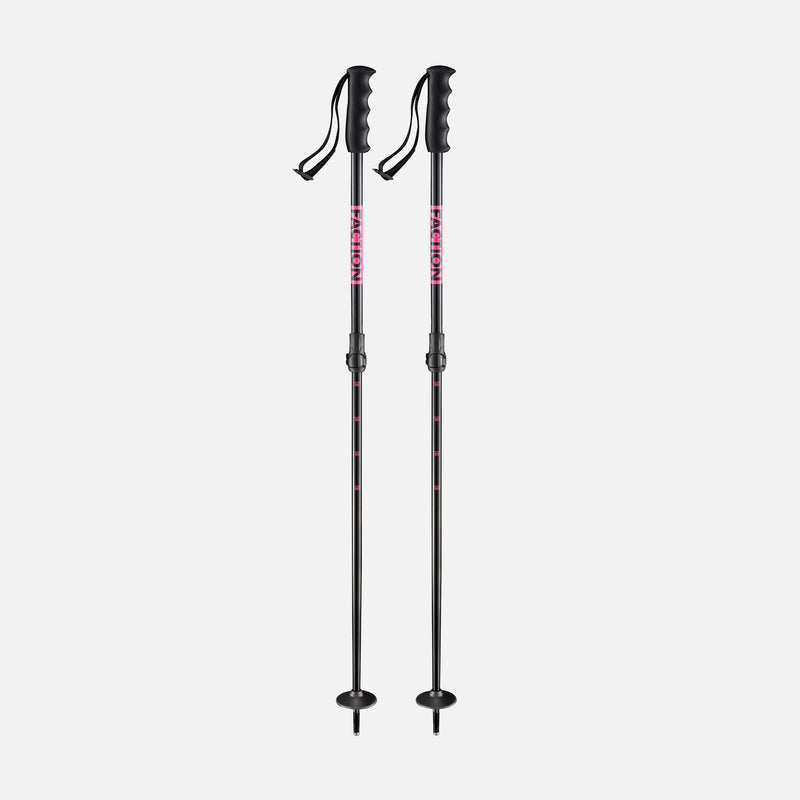
We are excited to welcome Vasu Sojitra to The Faction Collective; professional mountain athlete, adaptive skier and “your friendly neighborhood disruptor”. When Vasu was only nine months old, he was diagnosed with septicemia, resulting in the amputation of one of his legs. Since then, he has not looked back; with the help of his family, friends and many other resources and opportunities, Vasu has gained the confidence needed to overcome any challenge in his path. A self-proclaimed pot stirrer and passionate advocate for social change, Vasu’s motto is “#ninjasticking through the wood to bring intersectionality to the outdoors”.
“What is ninjasticking?”, we hear you ask. Read on to find out.
Welcome to the team, Vasu! Can you tell us a bit about yourself?
V: My name’s Vasu Sojitra. My pronouns are he/him/his. I’m a visitor on the land of Apsáalooke Nation, Confederated Salish-Kootenai Tribes, Northern Cheyenne Nation, Blackfoot Confederacy, Shoshone-Bannock Tribes, and many other tribes, nations, bands, and confederacies commonly known as Bozeman, MT (Montana, USA). I self-identify as an Indian-American and Disabled person of color with a right leg amputation. My motto is “#ninjasticking through the wood to bring intersectionality to the outdoors”. I’ve also been referred to as “your friendly neighborhood disrupter”, mostly because I tend to stir the pot of complacency when it comes to social change, specifically within outdoor spaces. I’m also a brother to Amir, a son to Rama and Hasu Sojitra, and I continually work to be a good ancestor to those who come after my time, both humans and animals. On top of all that, I am a professional mountain athlete, an adaptive athlete, and a diversity, equity, and inclusion strategist.
I grew up on the land of the Mohegan and Pequot tribe commonly known as Glastonbury, CT (Connecticut, USA). That’s where I was diagnosed with septicemia at the age of 9 months. After my stay at the hospital in Hartford CT, our family (of 4) moved back to Ahmadabad, Gujarat, India to gain family support. Realizing the need for better access to medical equipment, we moved back to Glastonbury when I was 7. I started skiing when I was 10 and never looked back.
As for the type of skiing I enjoy, I’m into anything off-piste (off the typical beaten path). That entails the backcountry, steep skiing, ski mountaineering - you name it, that’s my JAM! Groomers and parks are cool too. I’ve taught myself how to do 360s, 540s, and 720s, but I mostly enjoy being in the backcountry with my friends, getting the heart rate up and experiencing our natural world.

How did you get into skiing and what made you fall in love with the sport?
V: I got into skiing through a mutual friend of mine and my brother. I used to follow them around as a young kid. When they decided to take up skiing, I naturally followed suit. We had been watching things like Rocket Power, Johnny Tsunami, and the X-Games where I noticed folks of color doing these activities in a predominantly white sport and thought to myself, “let’s give it a try!”
I tried ski school, but the instructor wasn’t trained around adaptive skiers, so he had a difficult time figuring out how to guide me. My brother and I then ditched and went off on our own. I would mostly follow him around and fall CONSTANTLY and get so frustrated. That’s where Amir would tell me to get up and stop crying. A bit of tough love made me develop the mindset of “fall 9 times, get up 10”. Adversity creating resiliency. I’m beyond grateful to have the support of an older brother that didn’t coddle me. In the Disabled world, non-disabled folks really tend to do just that and in hindsight, that ethos my brother expressed cultivated who I am today.
On that first day, I serendipitously saw another skier with one leg. What are the chances of seeing another adaptive skier with a very similar disability at a tiny little ski hill in Connecticut? Very low I can only imagine. He came up to me and said, “keep at it” and skied off. Now that I think back, he was a pretty average skier enjoying his time on the hill, but that moment shifted my perspective heavily through seeing what representation looked like. I started diving into what adaptive skiing was and the Paralympics and holy hell did I find a whole different world! Competitions, medals, fame, speed, all different types of disabilities. At a time where I was still very ashamed of having a disability, this representation shifted so much for me, but I never found racing attractive. I’m not a competitive person.
Right when I started skiing, I started skating. I love the culture and vibes. Folks like Rodney Mullen, Daewon Song, and Tony Hawk were folks I looked up to and still do. This love for board sports made me want to actually snowboard at first but couldn’t think of how to do that so I reverted to skiing, but in a more stylish manner. I didn’t stop as I went to the University of Vermont where access to the ski hills was easy. That’s where I truly developed a deeper love for skiing; from figuring out how to get into the backcountry with one leg and outriggers (crutches with skis on the bottom), to now pursuing a career around snow sports with a purpose.
Through my Indian heritage, I've learned that community is always prioritized through interdependent relationships. I took that ideology into my ski career by heavily focusing on the adaptive sports world. Through my role as an Adaptive Sports Director at a local nonprofit here in Bozeman and as a professional athlete, I aim to shed light on the many issues surrounding access to the outdoors for marginalized communities. It’s been a whirlwind. That brown, chunky, one-legged kid never would’ve imagined being where I am today, not just as an athlete, but even more so as an activist, continually fighting for equality and inclusion for folks that look like me and others.
Tell us about ninjasticking.
V: Ninjasticking is a term that Mike Gardner, a guide and friend of mine, coined when we summited the Grand Teton in 2014. He saw me technically crutching on a ledge with a 2,000ft drop on the right side and thought of it. It seemed fitting to what I was doing and it has stuck ever since. Now the concept of ninjasticking has evolved to breaking down the stigma around disability and reframing what disability means. Medical equipment has this stigma of being “bad” if you use it and this term has been a way to bring levity to a heavy topic. The way I see it, it helps normalize disability. Plus, kids love it when I tell them I use ninjasticks. They want in!

What does a typical day on the mountain look like for you?
V: My typical day is pretty casual. If it's a backcountry day, we usually take a look at the avalanche report of the location we’re headed to. In Montana, the approaches are LOOOOONG, so it takes a second to get to the ski terrain. We tend to only do one lap given I’m doing dips all day and get pretty exhausted if you can imagine.
In the springtime, once avy danger has mellowed out, we plan a few big missions. This season we planned to do Mt. Moran in the Grand Tetons and Tahoma (Rainier)’s Fuhrer Finger. We usually travel in small groups of 2-5 people to make sure decisions are made ethically and morally with everyone's input.
When on piste, I’m over at Bridger Bowl where I tend to get up to the ridge at least twice a day. That’s all hike-to terrain so again a bit of a workout. I’m not that old (29), but I’ve definitely evolved from “no friends on a powder day” to “go skiing with your friends”. I love skiing in a community with other adaptive skiers and skiers of color, as well as many of my friends that don’t identify as such. My favorite crew is what I've coined “The Chocolate Chips” of Jackson. A crew of folks of color ripping around in the Teton area. These moments have helped me grow the understanding that “everything worthwhile is done with others,”, as said by modern abolitionist Mariame Kaba.
Where do you call home now?
V: As I noted before, I’m a visitor on the land of Apsáalooke Nation, Confederated Salish-Kootenai Tribes, Northern Cheyenne Nation, Blackfoot Confederacy, Shoshone-Bannock Tribes, and many other Tribes, Nations, Bands, and Confederacies commonly known as Bozeman, MT which is my physical home. But more importantly, I’m at home when I’m in community with those around me. That’s my spiritual and emotional home. And my ancestral home is Gujarat, India where my life blood has originated.
Can you tell us something about yourself most people wouldn’t know?
V: I’m not quite an otaku, but I love anime! It helps me drown out reality when the going gets tough for just a hot second, plus I really enjoy the variety of animation that’s out there. It’s so unique and so captivating.

What skiers inspire you?
V: It’s interesting to say; I’m a skier, but I was never able to fully connect with ski culture that much. There haven’t been that many skiers that have inspired me other than Ingrid Backstrom and Shane McConkey, mostly because they brought the fun back to skiing.
Stand-out memories from last season?
V: For sure the MASSIVE February we had in Bozeman - 140 inches I believe - so fun! And without a doubt, skiing the Skillet on Mt Moran and the Fuhrer Finger on Tahoma. Such picturesque lines!
What challenges have you faced on your journey to becoming a pro skier and how did you overcome them?
V: I definitely didn’t have a mentor to help me learn how to ski on one leg; I taught myself everything. A big challenge was not having the representation that I was seeking when I was younger, other than that one skier that came by to say hi. And much of it was financial. We grew up in subsidized housing and having access to skiing was very difficult. I’m so grateful that our high school had a ski club and the season passes as a college student were inexpensive.
What changes would you like to see in the ski industry to improve accessibility, inclusion, and diversity within the sport?
V: The first thing I tell people and brands is that we all need to acknowledge our privilege, our power, and the massive number of atrocities that have occurred to so many marginalized communities. These have created a tear and a division between the exclusive culture of the ski industry and our world in general. As members of the ski industry, we are a part of this space and world. We need to do better always as individuals and brands. From there, we can work on ways to leverage our privilege to support others and build more resilient communities.
What I would like to see in the ski world is better representation, both in front of the lens as well as in leadership positions, a better understanding of culture and how to build more culturally cohesive spaces, ways of breaking down barriers for people with disabilities, center accessibility so everyone can be provided access to the same resources, and so, so, so much more! This question could be a full-on dissertation and we need to start somewhere.
What does it mean to you to join The Faction Collective and what are you looking forward to?
V: I’m so excited to join The Collective! Especially after reading of its origins and how y’all are working to combat complacency within the ski world. I truly love that because I’m 100% a pot-stirrer and button pusher. Stoked to know others are like that in this Collective.
I’m really looking forward to pushing that mission forward and taking part in many of the initiatives y’all are undertaking, from the sustainability work to the graphics and working with various artists. So cool! Very much looking forward to it all!




